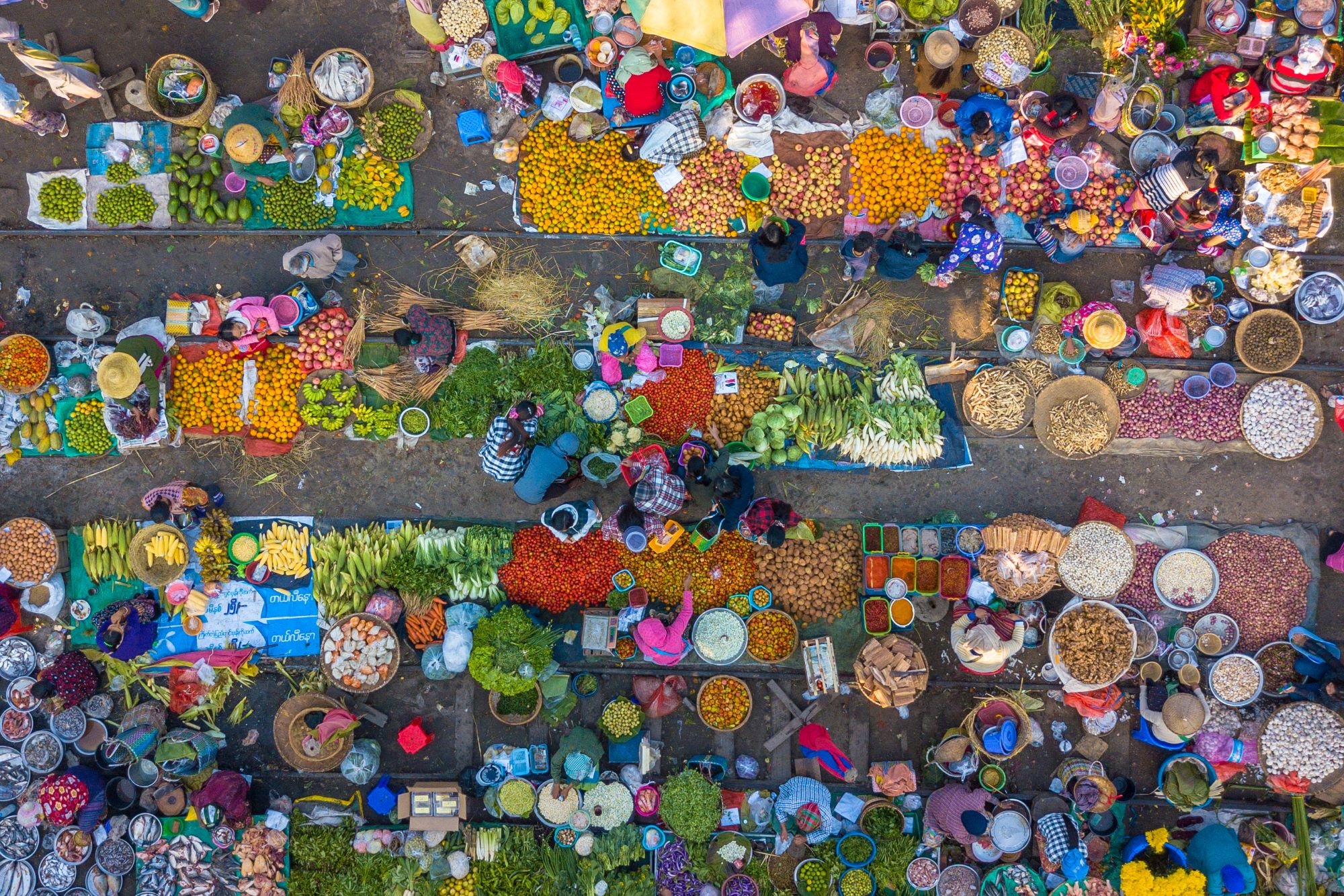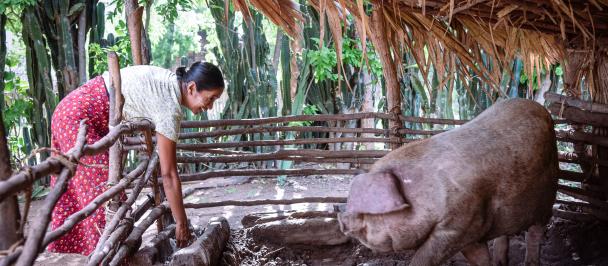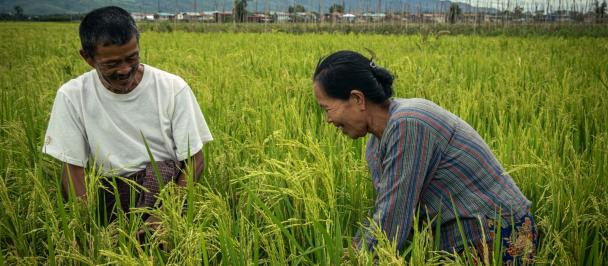Localized livelihood and agricultural assistance are critical in strengthening Myanmar’s food security
December 12, 2023

Women farmers in Myanmar
Access to food in Myanmar has been worsening since the military takeover in February 2021, caused by multiple intersecting issues. Humanitarian support alone will not address this growing food insecurity. Responses need to be sustainable and tailored to local contexts and needs to ensure a lasting impact on communities, according to a new UNDP report.
"Strengthening food security in Myanmar: A roadmap for localized action" argues that shifting to longer-term assistance, where appropriate, will improve people’s livelihoods, develop incomes, and make food production more affordable and efficient. It also explains how responses need to move away from national generalized approaches to localized interventions.
Challenges of food insecurity
Food insecurity in Myanmar is caused by a range of issues, exacerbated by the political instability and economic turmoil caused by the 2021 military takeover.
Costs of agricultural inputs, such as fertilizer, are increasing as supply chain challenges grow and there is an increasing labour shortage due to migration. This is reducing food production and pushing up the prices of produce in markets at the same time as unemployment and depressed wages are reducing people’s purchasing power.
Movement restrictions compound these issues, affecting both farmers’ ability to get their food to market and for people to reach these locations to buy their groceries.
Formal credit and micro-finance availability is limited. This reduces farmers’ ability to buy agricultural inputs or invest in new equipment to improve productivity, or otherwise pushes them to risk getting into debt using informal money lenders with exorbitant interest rates.
How these issues play out varies by state and region, underlining the need for livelihood and agricultural responses that adapt to local contexts. Conflict-affected areas, including Chin, Kayah and Rakhine states and Sagaing Region, are among the most affected by food insecurity, with interrupted harvests and restricted movement of goods and people causing spikes in food prices. This adds further challenges to populations already facing displacement, deprived of adequate shelter, and with limited or no access to basic services.
People are being forced to adopt harmful behaviours to cope, including reducing the amount of food they eat and having less nutritionally diverse diets, while families often prioritize feeding children typically at the expense of women in households. Food shortages increase women’s time spent on finding food to feed their families and on childcare, increasing work burdens at a time when worse diets reduce energy levels.

A wet market in Myanmar
How can food insecurity be addressed?
Ensuring food is available, accessible and affordable is critical to reducing food insecurity, and those states and regions most affected should be prioritized with locally relevant responses. This should aim initially at providing essential life-saving aid before transitioning as soon as possible to sustainable support for people’s livelihoods. The transition from handouts to a hand-up should be made when and wherever possible.
Women in communities should be involved when identifying the most urgent needs, ensuring assistance addresses the high work burdens and health risks they face, including developing skills to help improve and diversify incomes.
Myanmar is highly prone to the risks of climate change, which will see adverse weather events increasing. Cyclone Mocha made clear the dangers communities face when it ruined farmland and crops, killed livestock and devastated people’s livelihoods when it struck Rakhine State in May 2023.
Responses to improve food security need to be responsive to these threats, both by making agriculture more resilient and by reducing greenhouse emissions that contribute to climate change. Switching away from growing rice in flooded soil can, for example, reduce methane emissions, use less water, produce more nutrient-rich grains, reduce labour needs, and ensure a stronger root system that makes the crop more resistant to weather risks.
UNDP has been implementing localized projects in Myanmar that provide critical climate-resilient support to farming communities and help reduce food insecurity by improving the livelihoods of over 1.85 million people since February 2021.
We are helping people in Tanintharyi Region earn incomes in a way that protects mangrove forests, which are vital flood defences. We are helping women from low-income households develop livelihoods that fit their context, skills and needs. And we are introducing farmers in Shan State to new, more effective ways to work their land.
"There is no one-size-fits-all solution to ensure people across Myanmar can access sufficient food. The country is ecologically diverse, and facing widespread conflict and contested governance. Assistance must be adaptive to local contexts, working with communities to develop support that meets their needs, improves food production, and has a lasting impact on their ability to earn a reliable income in the months and years ahead," said Titon Mitra, UNDP Myanmar Resident Representative.
Read the report to explore the recommendations in full.

 Locations
Locations

